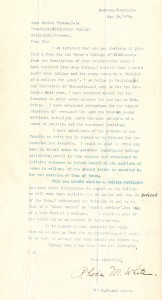What better way to wish a friend or loved one a “Happy Halloween” than with a postcard depicting a wacky, spooky, romantic Halloween tradition? Today these postcards, now archived as part of a collection of historical postcards in Special Collections, offer a glimpse of Halloween pastimes with Scottish, English, and Irish influences.
While we recognize bobbing for apples and roasting chestnuts as typical autumnal activities, these postcards illustrate the soothsaying power Halloween inspires in every household item – from magic mirrors to apple augurs. Who knew that uprooting kale blindfolded in the dead of night could reveal specific details about future loves? Or that an apple peel denotes the initials of your future spouse? Only on Halloween, October’s very own Valentine’s Day.
Nuts, Kale, & Cabbage
Anthropomorphized nuts, paired off with the titles “Uncertainty,” “Hope,” “Despair,” and “Happy Ever After,” represent the practice of interpreting the behavior of chestnuts in a fire. Those participating would assign two chestnuts to a couple and observe whether the chestnuts burned together, jumped apart in the flame, crackled loudly, or came together.
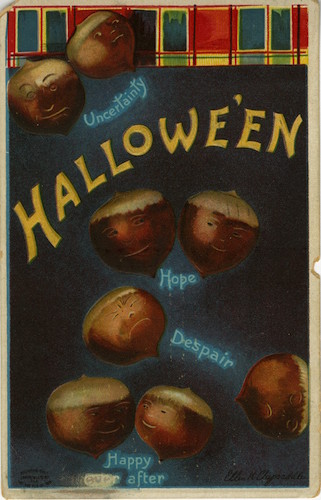
A couple was said to live a long happy life together if their corresponding chestnuts burned brightly and quietly next to each other, or their relationship would end in disaster if they crackled contentiously and popped in different directions.
In a similar gastronomical theme, partygoers would collect cabbage or kale from the garden blindfolded and ascribe various meanings to the experience. Perhaps in continuation of ancient harvest celebrations, this ritual took on romantic implications in the American Hallowe’en context.
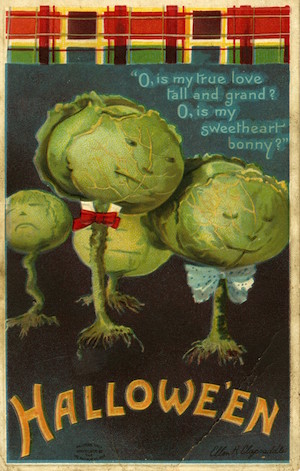
If the selected cabbage or kale was difficult to unearth, it denoted difficulty in a relationship. Kale with clumps of dirt stuck to the roots signified a rich husband, and the size, shape, and taste of the kale foretold the physical attributes and personality of a future spouse.
Open Flames & Apple Peels
Another postcard depicts a daring party game in which a stick was suspended horizontally from the ceiling with an apple impaled on one end and a lit candle affixed to the other. The stick was sent spinning while guests attempted to bite the apple – without getting burned by the candle. The skill with which one could capture a bite indicated their fortune in love, and if a player got burned in the game, he or she was certain to be “burned” by a lover. (Special Collections & Archives does not endorse any of the activities described in this post. Please don’t try this at home.)
Apples weren’t just for group play. An apple peel when thrown over the shoulder could disclose a future spouse’s initials, and an unintelligible result denoted spinsterhood (though the reader could interpret her apple peel liberally).
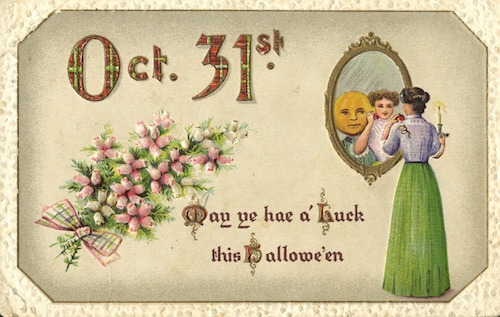
Blindfolds & Finger Bowls
Another party game used bowls of different liquids. Blindfolded players would select a bowl, and its contents would reveal their fate. Clear water signified marriage to a young and fair mate, vinegar denoted widowhood, and an empty bowl meant solitude.
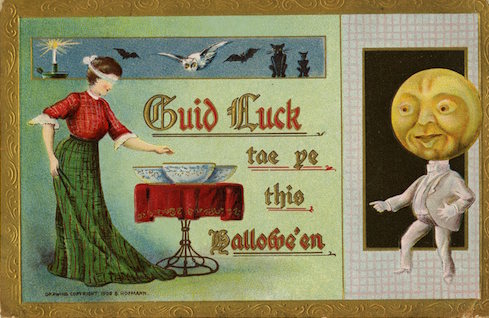
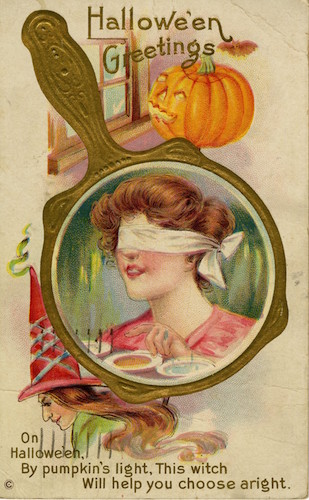
Mirror, Mirror
Mirrors also took on special powers on All Hallow’s Eve, as depicted on the following postcards.
In fact, your true love’s face was said to appear in a mirror if you performed various activities on Halloween night. Such as, brushing your hair…
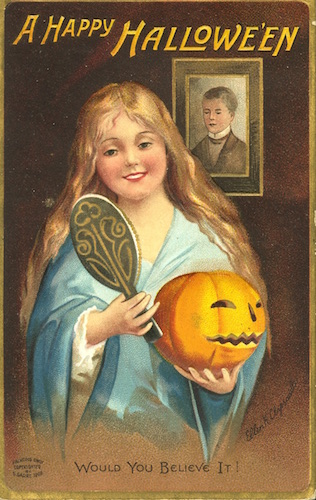
…abandoning your party guests to steal to your room with a Jack-o-lantern…
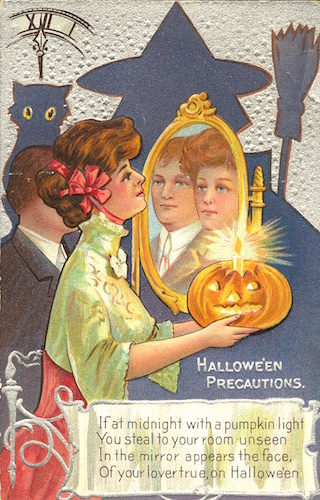
…or, walking down the cellar stairs backwards with a candle in one hand, a mirror in the other, and a mouthful of salt. If you didn’t trip and break your neck, you would live happily ever after with your love until a peaceful, sodium-induced demise.
All in the name of love and the spirit of Halloween!
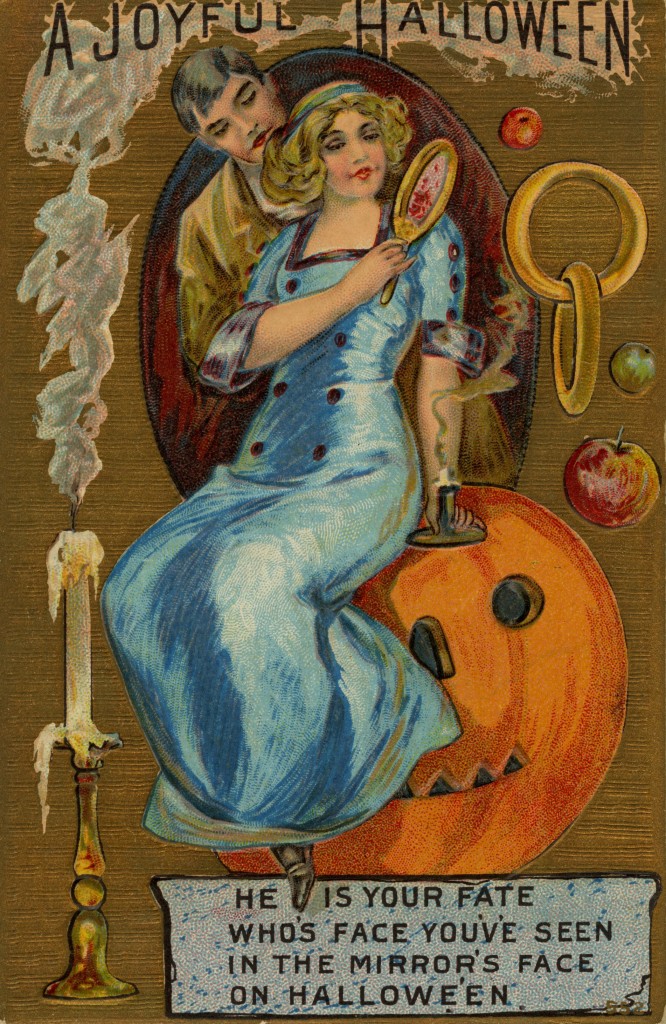
References
Arkins, Diane C. Halloween: Romanic Art and Customs of Yesteryear. Gretna, LA: Pelican Publishing, 2007.
C-132 Historic Postcards & Ephemera, Special Collections & Archives, Middlebury College.
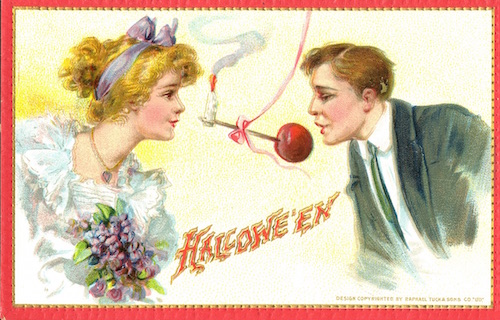
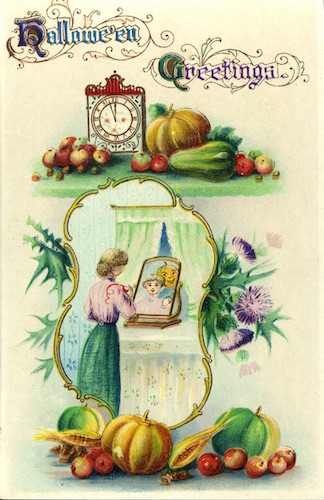
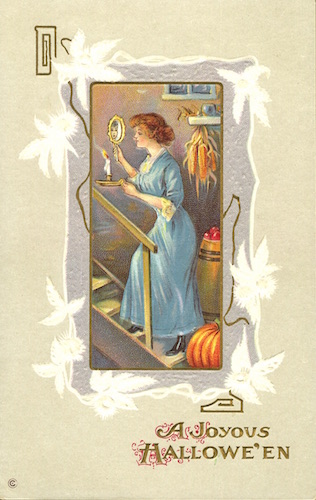
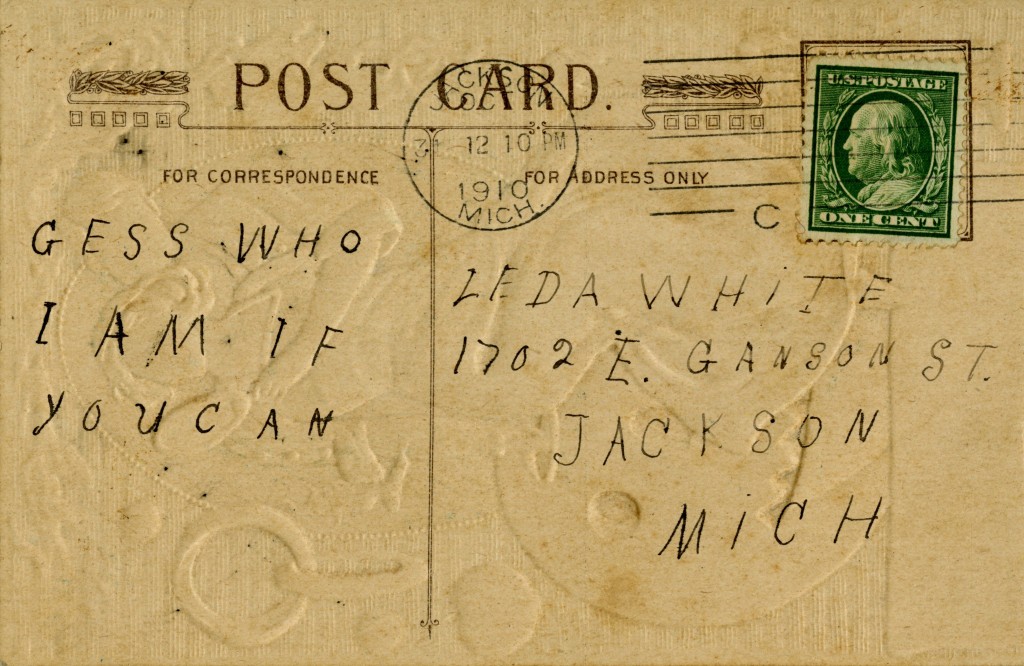
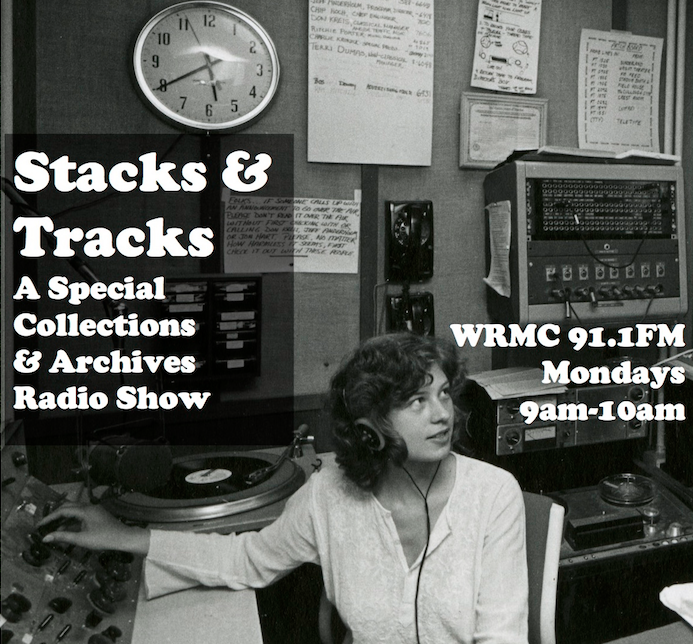



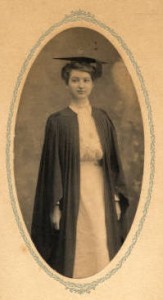
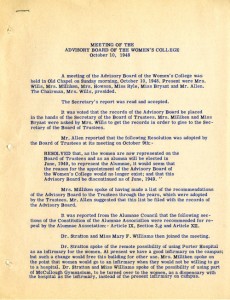
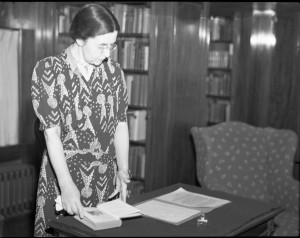

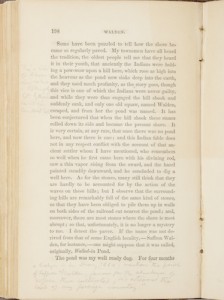
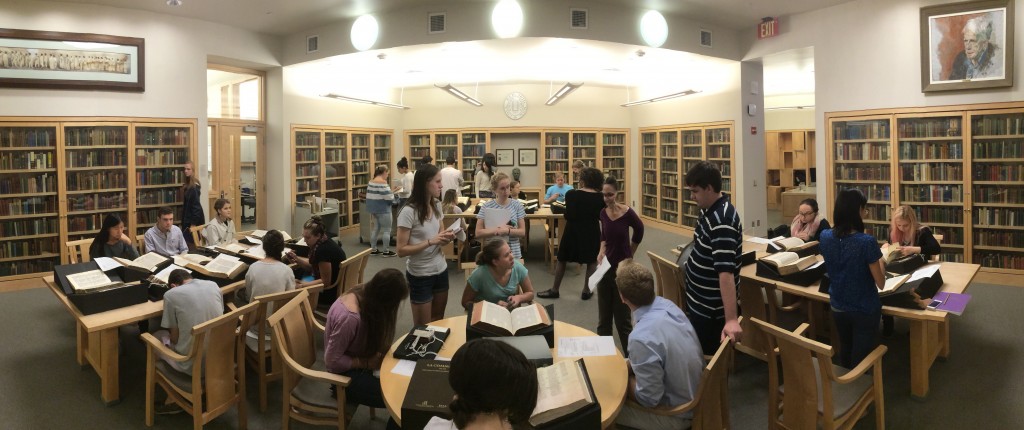
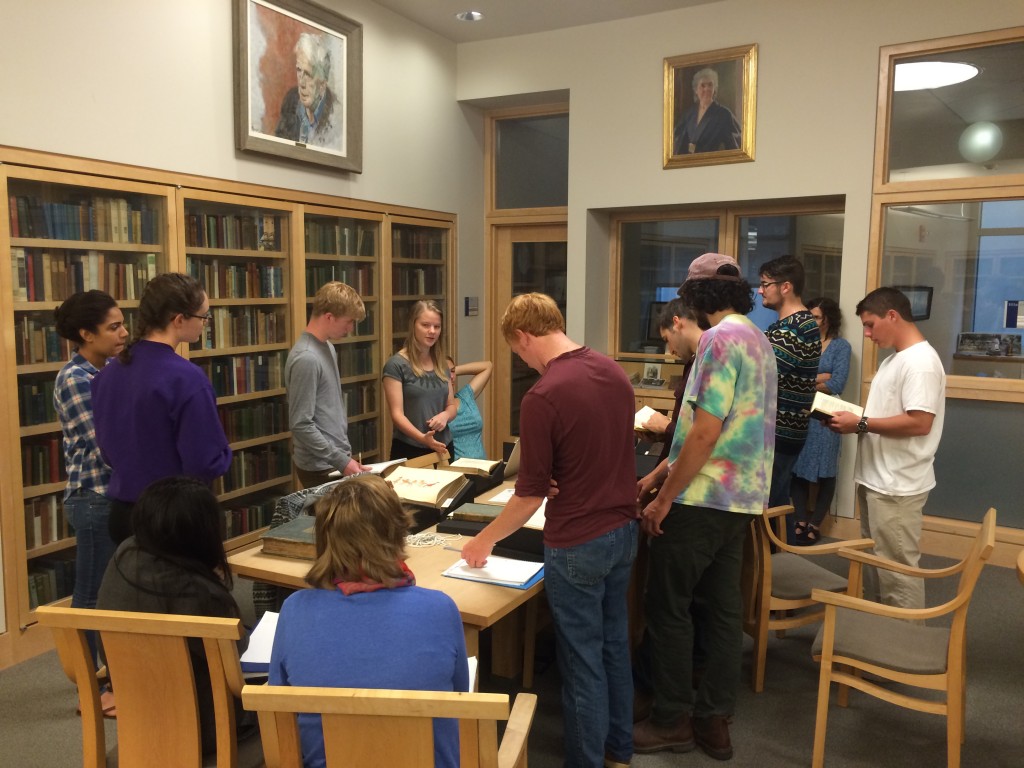
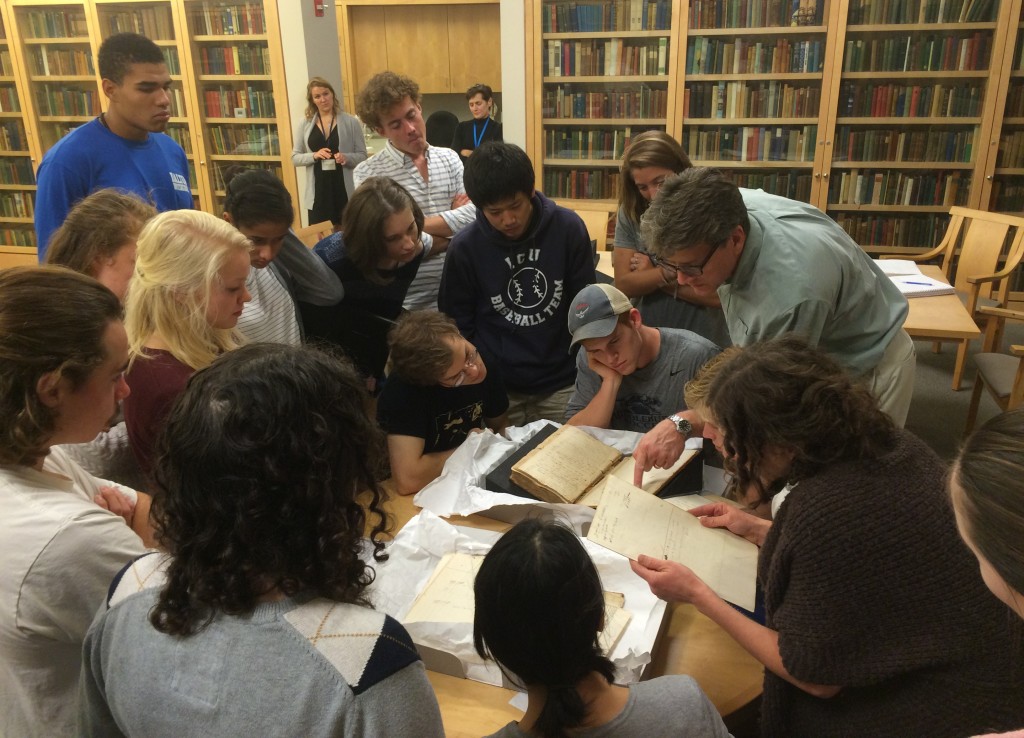
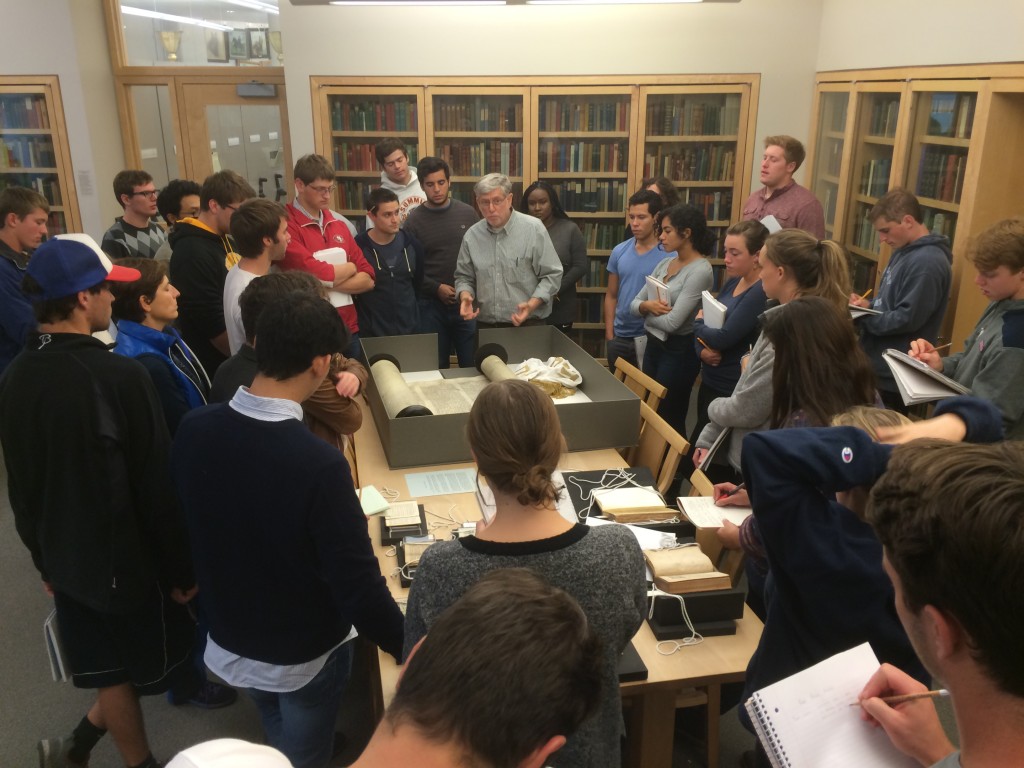
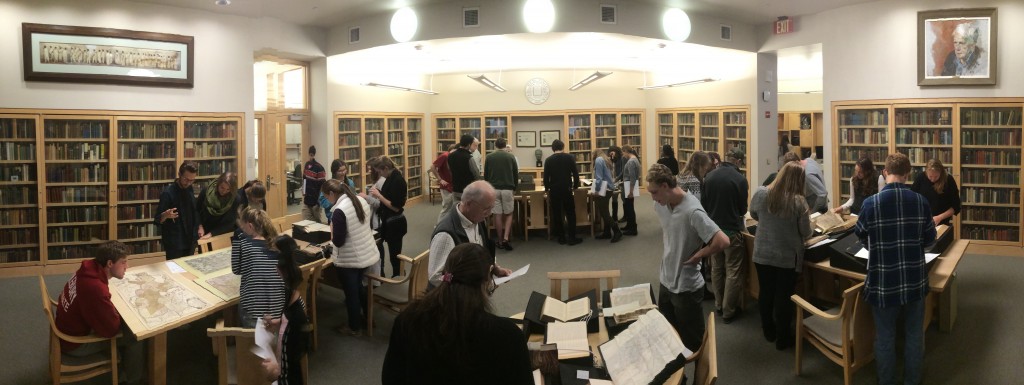
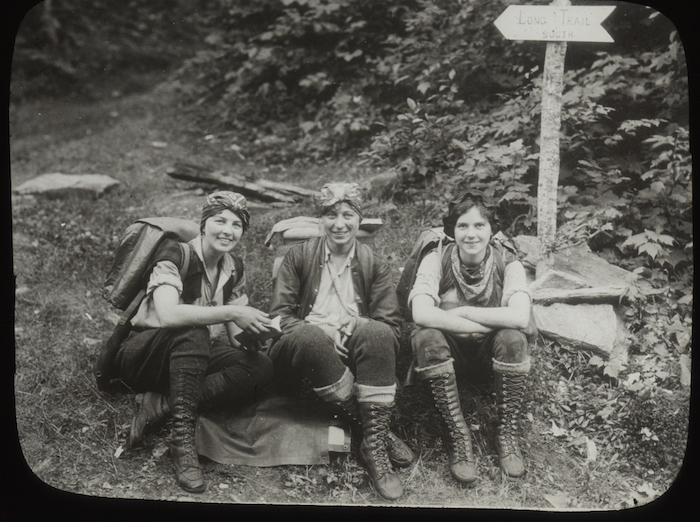




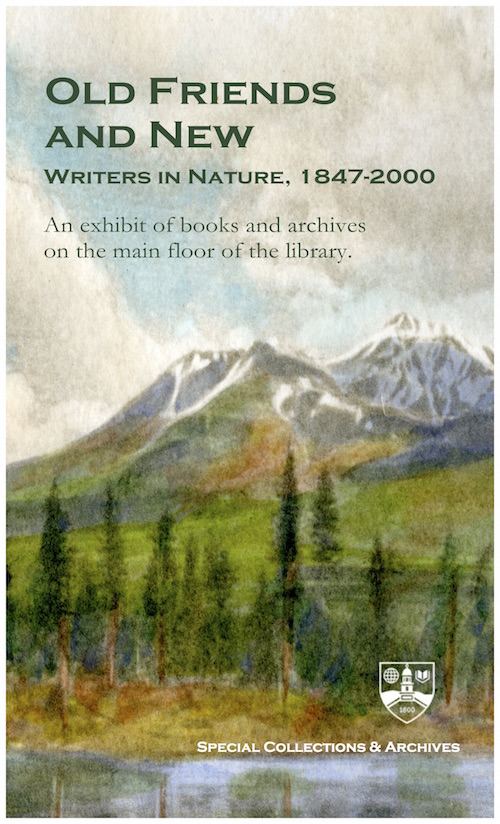
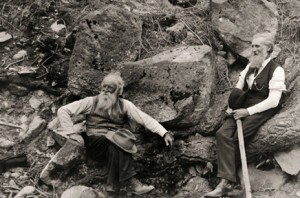


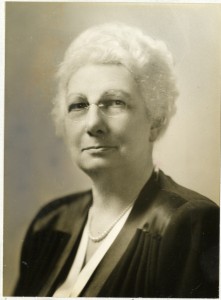

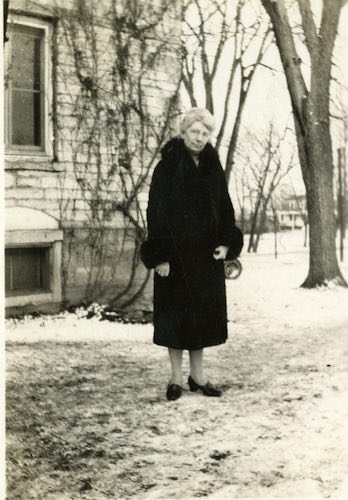
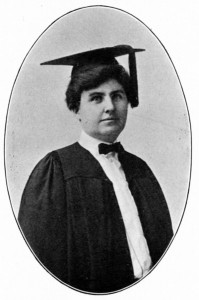 Leading up to the
Leading up to the 